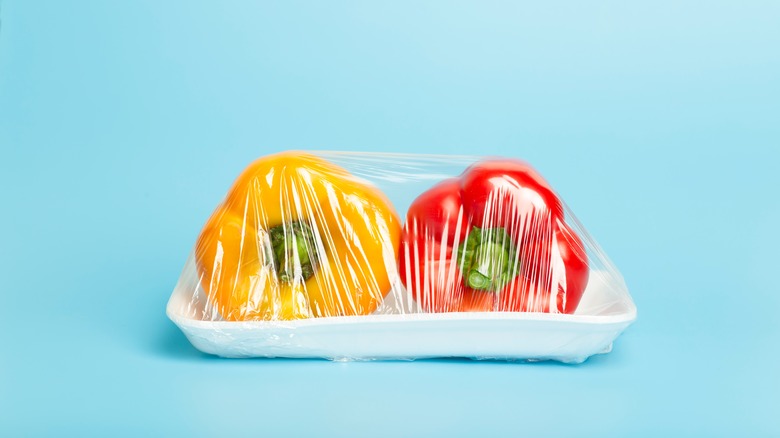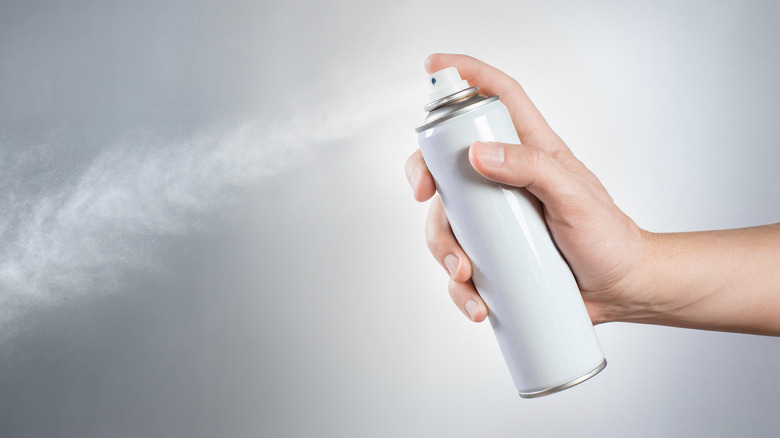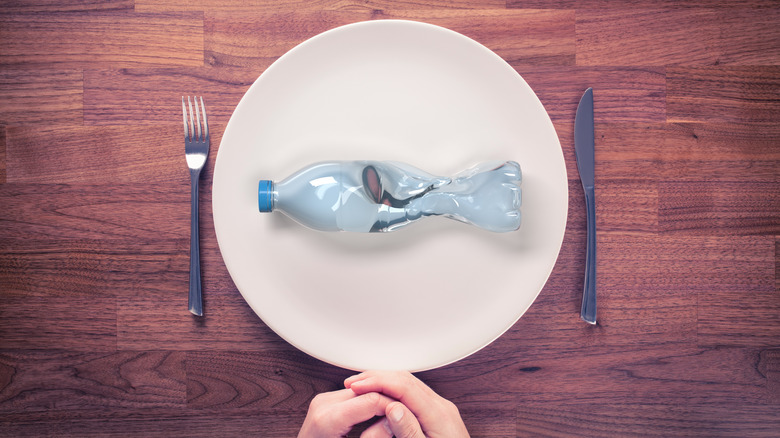Scientists Created A Spray-On Wrapper That Could Reduce Food Waste
Composters have been reducing food waste for ages by using vegetable scraps. But today, a whole array of high-tech products are on the market to help make an even more significant dent in food waste. Beeswax food wrappers — like these from Tru Earth — have recently emerged in supermarkets and specialty shops as a reusable alternative to single-use plastics like cellophane or even disposable aluminum foil. Many conscientious consumers are opting for tea brands with compostable bags.
Now, researchers have come up with what might be the most high-tech, eco-friendly product of them all. Rutgers scientists recently developed a spray-on wrapper that acts as an alternative to traditional cellophane. Step into the future with us. According to the university, the new antimicrobial spray does everything regular cellophane can: it keeps food fresh, prevents spoilage, and blocks pathogens and bacteria. It even protects your dishes on their way to your next dinner party. Better yet, this spray-on wrapper does what regular cellophane can't, breaking down naturally. Plant-based ingredients make the wrapper biodegradable. So, how does it work?
Our spidey-senses are tingling
Rutgers explains the method behind the madness. Starch-like biopolymer fibers are quickly spun in a small, heated turbine-like dispenser, then sprayed out in a web, where the fibers then latch around your food, per the researchers' article published in Nature Food science journal. The spray is cost-effective, nontoxic, water soluble (so it can simply be washed off when you're ready to eat), and decomposes in soil within just three days.
Philip Demokritou, director of Rutgers Nanoscience and Advanced Materials Research Center and Chair in Nanoscience and Environmental Bioengineering, says this product is a crucial development for the planet and human health. Demokritou says, "I'm not against plastics. I'm against petroleum-based plastics that we keep throwing out there because only a tiny portion of them can be recycled." Over the past 50 to 60 years, during the Age of Plastic, we've placed 6 billion metric tons of plastic waste into our environment... and these tiny fragments are making it into the water we drink, the food we eat, and the air we breathe," Demokritou continued.
According to Britannica, true cellophane is made from a cellulose film, a plant cell structure made of glucose. While this is plant-based in theory, they say that actual cellophane has steadily evolved to include synthetic polymers and other plastics. Even buried in soil, it takes a single thin layer of coated cellophane up to 120 days to fully break down, per Disposal Know How.
The future of eliminating plastics
Per the National Geographic, single-use plastics like cellophane and bottled water is the biggest source of microplastics in the environment -– which can have detrimental effects on the living and nonliving organisms therein. Microplastics, it says, have been detected in everything from the bellies of whales, in tiny plankton, in the seafood people buy at the grocery store, and in the water you drink. The Science Times estimates that we down approximately 39,000 to 52,000 particles of microplastic yearly. If you include the microplastics that can be inhaled just from breathing, the number jumps to 74,000.
Dick Vethaak, emeritus professor of water quality and health at Vrije Universiteit Amsterdam, worries that modern scientists have more questions than answers about the long-term ramifications of ingesting microplastics. "There is plastic circulating in our bodies," says Vethaak, via NBC. "Are [microplastics] excreted? What is the fraction excreted? Are they stuck somewhere in the system? Do they accumulate in certain organs? Do they pass the blood brain barrier or the placenta?"
So, could this new product be the future of sustainable food safety? Philip Demokritou thinks so. "This is part of a new generation, 'smart' and 'green' food packaging," Demokritou says, via Rutgers. In the meantime, we're hungry for more long-term sustainable options like this one.


